Since 1996, when I first designed
this aircraft I was dreaming to fly by electrons, in other words through
the power of electrics motors, with electric propellers spinning in the
air making flying my immaginary aircraft.
At
the time of my idea there wasn't any electric motors on the market at
least not those I needed to make my machine taking off the ground. Both
electronics and software were not so powerful and efficient as they are
nowdays, however many interesting blinking signnals seems to appear on
the horizon, while my imagination was still flying gain even more altitude
in a dream that is still flying even today; and perhaps for the following
years to come.
 |
Electric propulsion most of the time saw the employement of heavy and low performance battery cells. My idea about the power source has been always different at least in 1996 because at that there was no way to build someting which could fly thanks to heavy and low performance battery unit. I'm still currently of this opinion about batteries, I think that many years have still to come before somebody will be capable to make a light and high density battery unit capable to be recharded in few minutes. Probably a dramatic development of Fuel-Cells or something very similar will be the right approach for aviation what I can just say is: Let’s wait and see. The original idea in the far 1996 was however very simple: connecting an APU (Auxiliary Power Unit) to a certain number of electric motors, that’s all!!
The
project isn’t that easy as it seems, she required a special APU.
A light and powerful alternator connected with a simple and efficient
small turbine engine; some electronics stuff: computers; special
software; very light and efficient electric motors, and a
new way to conceive the cockpit and the aircraft itself. This
was simply my receipe to built a perfect VTOL aircraft
and this is from where I started from.
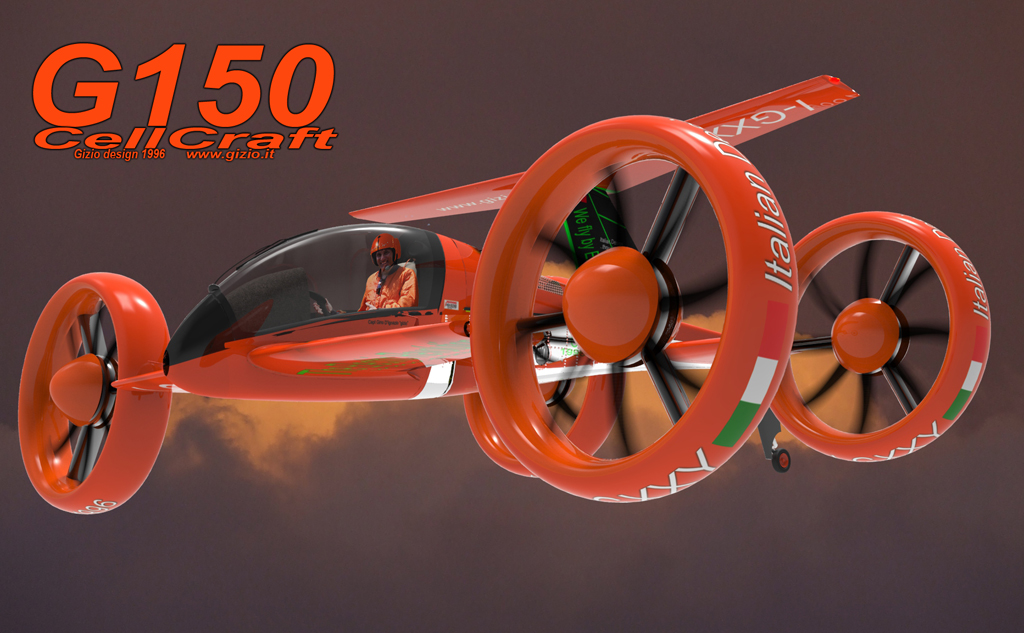 |
I've fond this project at the end of 1999 and I think it is still interesting even today. I had some sketches stored in a box with a relate description in every single detail as I use to do, like taking notes or writing a detailed description of the project. At that time I used to draw with black pencils making some sketches refining them later with a series of different views adopting more sophisticated tools and different graphic tecniques, playing with airbrush and stuff like that in order to get the most impressive images of any single project.
In the early 2000 I started to work with 3D modelling software and I decided that was the right time to re-build all my past project using the digital tool. So I've started with the G150 and the DDRH making of them two 3D virtual models. What I find very cool about 3D modelling software like Rhyno, is the fact that I could letterally build anything I want piece by piece, having the possibility to explore my object, rotating, exploding, moving it in and out or making thousand of more interesting operation like apply texture etc. So building my aircrafts piece by piece had been a such exiting activity for me and still it is so.
I believe that though CellCraft series are pretty much advanced project, the G150 is indeed the basic step from everything that came later, a very important project to better understand the process that took me later to the more sophisticad G450 (2003) which represent the classic architecture of a typical CellCraft of course a more elegant and complex aircraft representing everything that powered my dreams as pilot and designer.
All
the CellCraft are powered by a PA's unit which is the
hearth of the aircraft. It's a small turbine engine connected to an
alternator providing the electricity necessary to power the aircraft
itself and the eight electric motors controlled by a computer (AFS
Automatic Flight System).
Both the turbine and the generator spins at high rpm, (19000
per minute, maximum power available 255 Kw).
The alternator is made by light material and strong magnetos, in order
to a good weight/power ration. The main shell is made of aluminium,
while rotor and bearings are made by steel. The device itself could
be supplied with different type of fuel, like diesel, bio-gasoline,
or ethanol that’s allow a very wide range of application as well
be environment friendly.
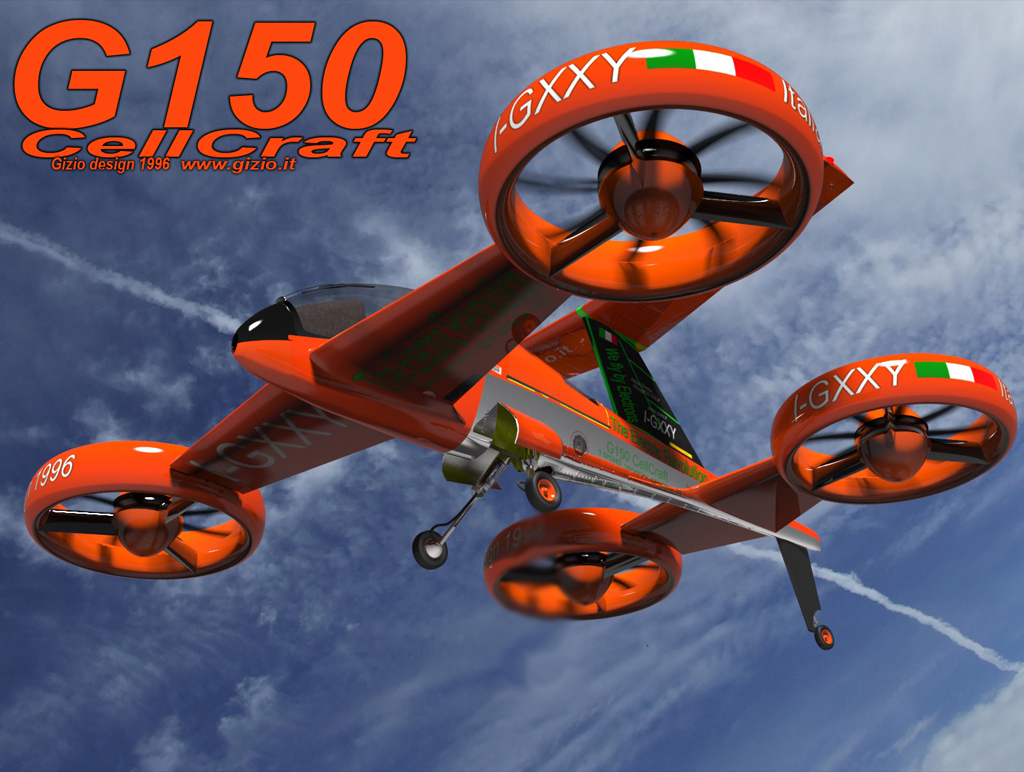 |
The power produced by the APU power unit (turbine-alternator) is processed through a special transformer which it's controlled by a digital device, the EPC (Electric Power Control). This device indeed, provide to a perfect distribution in output of the electric power generated by the APU (PA 250), increasing or decreasing turbine acting like a Governor like that installed on a conventional Helicopter turbine engine. The EPC in-fact can “restore” at any due second the required power to compensate any potential loss of energy, constantly tuning the system in order to save energy and then fuel.
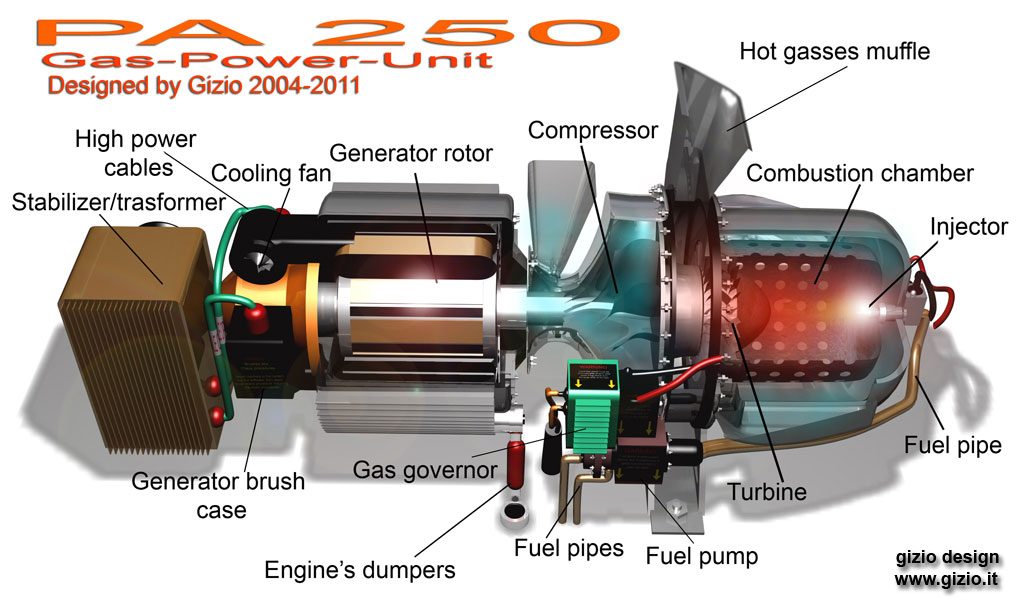 |
The power unit on the G150 was provided of a special battery-unit, a Ion-Lytium type, relatively light and small, and four super electrolytic compensator. This device combination act in case of emergency as auxiliary power source, allowing the aircraft to fly at-least for a maximum range of 7 minute. Such time could be sufficient for the pilot in order to find the right spot where to make a safe landing.
The APU provide all the necessary power for both flight activity as well for all the main function of the aircraft, the PA 250 is the main source of power on the G 150.
 |
As
you can see the G150 remind for same aspect a small conventional
glider, a single seat aircraft designed for a medium size pilot, provided
of a wide single screen cockpit. There were just few switches and a single
main touch screen for both functions: displayng information
working as main control panel. Pilot can select among many functions just
touching on the screen the relate graphic icon, or calling the desired
comman through a vocal command.
The head of the main directional control (cloche) is
provided of a top display which shows radio frequency and any other minor
functions.
 |
The aircraft body is basically made of aluminium alloy, some other components instead were built with special plastic resins, today largely employed in contemporary aircrafts as well on the more recent G400’s generation. At the time of this project in 1996 those materials were still too expensive and less affordable than nowdays.
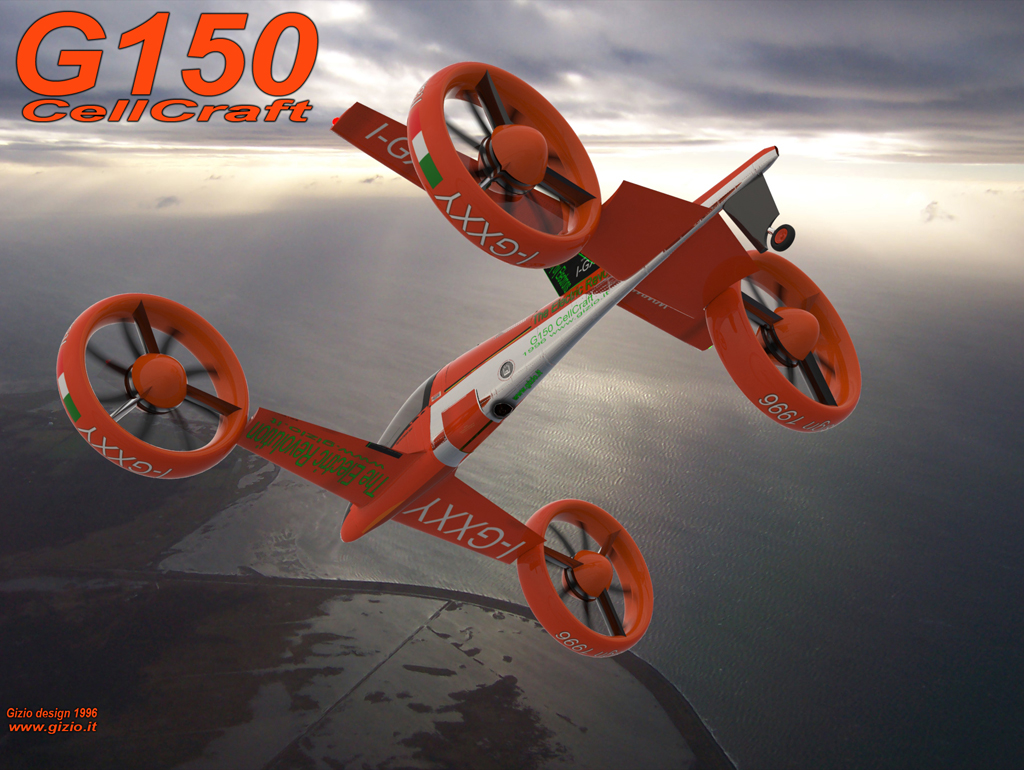 |
I needed a very strong and light frame due but strong enough to support the centrifugal forces and vibrations that act on all electric motors while turning at high speed. Rotors work as a sort of gyroscopes, making the rotational phase of the four rings from a steady hover to the forward flight very stressful generating high torsion moment all along the wings and for the entire aircraft body.
The aircraft is provided of thee landing gears, two in the meddle side of the body which are retractable, and a third one fixed under the tail vertical stabilizer.
 |
The G150 is provided of three basic lifting surfaces. In the front side a vide couple of wings which sustain the front rings, those are quite capable to produce a reasonable amount of lift. A second wing’s unit is instead settled in the meddle area of the body, it is a Lookeed type, and works both as main wing as well as horizontal dynamic stabilizer, controlled by the AFC. The third lifting surface instead is settled in the tail area of the aircraft connecting the tail rings with the main body, this latest surface act more as horizontal stabilizer rather than as a lifting surface.
The wings are quite reinforced with a special net structure that remind a sort of honey comb, they cover the main shafts that sustain the fans which works also as lifting surface during forward flight. The front wings are capable to support the moment due to the rotation of the rings, every time the pilot start the transition from steady flight to forward mode and viceversa because all the four rotors act as gyroscope, because there is a large mass spinning at high speed. So the rotation of the rings from the horizontal plane to a vertical position require a very strong structure, capable to counteract the tendency of the “gyroscopic system” of generating intense torsion moments on the wings and in some point of the fuselage.
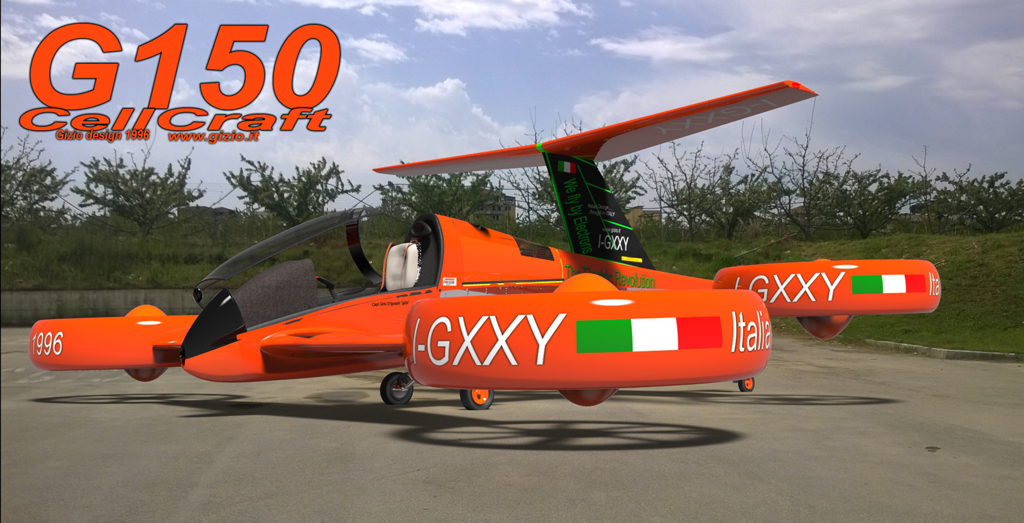 |
The evolution of CellCraft series with the G450 changed radically some constructive aspect of the wing, making the aircraft stronger but enough light.
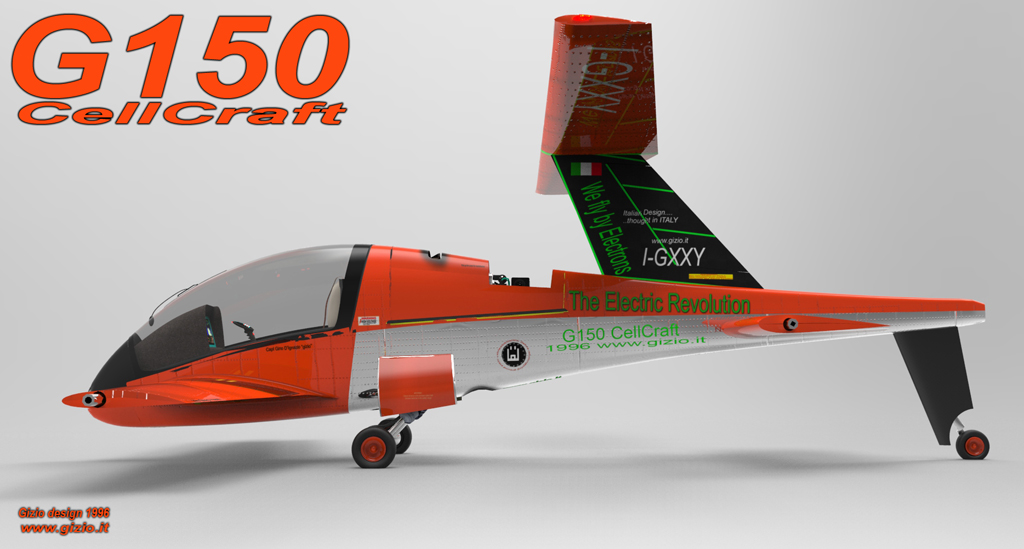 |